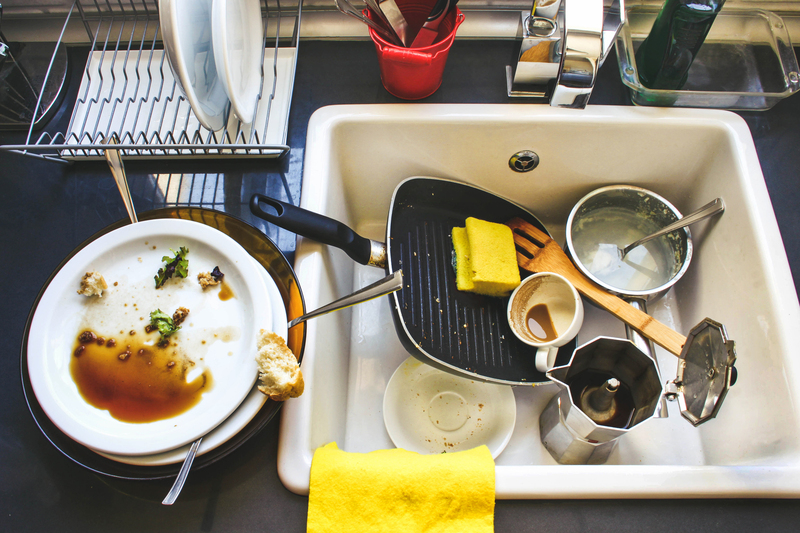How to Ensure Safe Moving of Your Bed and Mattress
Posted on 10/06/2025
How to Ensure Safe Moving of Your Bed and Mattress
Moving your bed and mattress can be a challenging task, whether you're relocating to a new home or simply rearranging your space. Beds and mattresses are among the bulkiest, heaviest, and most awkward items to maneuver, increasing risks of injury and damage. However, safe moving of your bed and mattress can be achieved with proper preparation, the right techniques, and informed decision-making. In this comprehensive guide, you'll discover practical strategies, tips, and expert advice on how to ensure a safe and efficient move for your bed and mattress.
Why Is It Important to Move Beds and Mattresses Correctly?
A bed serves as the centerpiece of comfort and relaxation in your home, while a quality mattress supports your body for healthy sleep. Improper moving techniques can lead to costly physical damage, shorten the lifespan of your mattress, or even cause personal injury. Additionally, a safely moved bed and mattress means:
- Preserving structural integrity of your bedframe and mattress.
- Preventing dirt, stains, tears, and unwanted odors.
- Avoiding injury to yourself and those assisting you during the process.

Essential Preparations Before Moving Your Bed and Mattress
Gather the Right Tools and Supplies
Being prepared is half the battle. Before starting to move your bed and mattress, gather the following supplies:
- Mattress bag or protector: Shields your mattress from dust, dirt, and damage.
- Furniture sliders or lifting straps: Reduce the effort needed to move heavy items and minimize the risk of floor scratches.
- Allen keys, screwdrivers, wrenches: For disassembling bed frames.
- Packing tape and stretch wrap: Keeps bed components and mattress bags securely closed.
- Bubble wrap or moving blankets: Adds extra protection, especially for wooden bed frames and delicate surfaces.
- Moving dollies: Make it easier to transport heavy objects safely across distances.
- Markers and labels: Helps you keep track of furniture parts and hardware.
Measure Doorways, Hallways, and Staircases
To ensure the safe relocation of your bed and mattress, carefully measure all the passageways along your intended moving path. Note the dimensions of doors, hallways, stairwells, and elevators. This prevents frustrating bottlenecks or, worse, damage to your possessions and the property.
Clear the Moving Path
Remove rugs, clutter, or furniture that may pose tripping hazards or impede movement. Secure pets or young children in a safe area while the moving process is underway.
Steps to Safely Move a Bed and Mattress
1. Strip the Bed Completely
- Remove all bedding, pillows, mattress protectors, and decorative items.
- Launder your linens, and pack them separately to avoid confusion.
2. Disassemble the Bed Frame
- Review manufacturer's instructions where possible, as certain frames have specific requirements.
- Work methodically, unscrewing and removing all slats, side rails, and headboards.
- Keep all screws, bolts, and small hardware in labeled plastic bags or containers.
- Wrap wooden or metal frame parts in moving blankets or bubble wrap to guard against scratches and dents.
3. Protect Your Mattress
- Place the mattress inside a reliable mattress protector bag. This shields it from dirt, moisture, and snagging during transit.
- Use packing tape to seal the bag securely, paying special attention to seams and corners.
- If your mattress is memory foam or latex, avoid excessive bending or folding. Refer to manufacturer guidance, as improper handling can compromise support.
4. Enclose Box Springs and Base Supports
Box springs and support bases are vulnerable to scuffs and tears. Wrap them in moving blankets or a heavy-duty plastic cover.
5. Lift and Maneuver With Care
- Mattresses are heavier and more cumbersome than they appear. Always lift using your legs rather than your back, and seek help for safe mattress moving.
- Two or more people should work together when moving large, unwieldy pieces.
- Use furniture sliders or dollies for smooth movement on floors.
6. Plan the Route Strategically
- Carry large pieces vertically where possible to fit through tight spaces.
- Navigate stairs carefully, moving slowly and communicating clearly with helpers.
- Pause frequently to avoid fatigue and reduce the risk of accident or injury.
7. Secure Transport and Placement
- In a moving vehicle, lay the mattress flat and stack any disassembled bed parts on top, well padded.
- Secure all items with rope or straps to prevent shifting during transit.
- At your destination, reassemble the bed frame before unbagging your mattress to keep the mattress clean.
Expert Tips for a Stress-Free Bed and Mattress Move
Use Professional Moving Services
Professional movers are equipped with the necessary tools, experience, and insurance to guarantee the safe moving of beds and mattresses. If your bed or mattress is particularly large, valuable, or difficult to handle, consider outsourcing this step for peace of mind.
Don't Ignore Mattress Type
- Memory foam or latex mattresses should never be bent more than a gentle curve.
- Innerspring and hybrid mattresses are generally more rigid but still require even support during moving to avoid warping.
Be Weather Aware
- Check the forecast for rain, snow, or extreme temperatures on moving day. Mattresses exposed to moisture or sunlight can quickly develop mold, mildew, or damage.
Take Photos for Easier Assembly
Before taking apart your bed, snap clear photos of how parts fit together. This simple step will make reassembly quicker and less stressful at your new location.
Reinforce Weak Points
If your bed frame has any weak joints or damage, reinforce or repair them before moving. During transit, fragile parts are particularly susceptible to splintering or breaking.
Common Mistakes to Avoid During a Move
- Dragging the mattress or bed frame over rough surfaces, which can tear fabric and cause frame joints to weaken.
- Underestimating the weight or size of your bed and mattress; always ask for sufficient lifting help.
- Poor planning, such as failing to measure doorways or clear a path before you begin.
- Neglecting to use a mattress protector, risking dirt or water damage.
Cleaning and Inspection Before and After Moving
Check for Signs of Wear or Pests
Before moving, thoroughly inspect your mattress for stains, odors, or bedbugs. Address any issues before transporting, as infestations can spread to your new home.
Deep Clean Surfaces
- Vacuum your mattress and use upholstery cleaner where necessary.
- Wipe down the bed frame with appropriate cleaning agents for wood or metal.
- Allow all components to air dry completely before wrapping and packing.
Post-Move Inspection
- Once in your new space, reacquaint yourself with your bed and mattress by checking for structural shifts or fabric snags.
- Spot clean as necessary before making up your bed for the first night.
Additional Safety Considerations When Moving Beds and Mattresses
Ergonomics and Heavy Lifting
- Bend your knees, keep your back straight, and avoid twisting your torso when lifting heavy items.
- Take frequent breaks if the move requires lengthy physical exertion.
Work in Teams
- Always use two or more people for moving bulky beds or mattresses.
- Communicate clearly about lifting and turning so no one is caught off-guard.
Use Gloves and Protective Gear
- Wear sturdy work gloves to improve your grip and protect your hands from splinters and sharp edges.
Eco-Friendly Bed and Mattress Disposal or Recycling
If you're planning to leave your current bed or mattress behind, be responsible! Dumping mattresses can have dire environmental effects, so consider these eco-friendly options:
- Donate to a local shelter or charity if the mattress is in good condition.
- Contact mattress recycling programs; many municipalities offer this service.
- Sell or give away items through reputable online platforms.
Safe Storage of Beds and Mattresses
If your move involves storage, ensure both bed frame and mattress are well-protected:
- Store mattresses flat to prevent warping or lump formation.
- Ensure the storage area is clean, dry, and well-ventilated.
- Wrap all items securely to avoid dust build-up and accidental tears.

Frequently Asked Questions on the Safe Moving of Beds and Mattresses
Can I move a mattress by myself?
While it's possible, it's not recommended. Most mattresses are heavy and lack supportive handles, so trying to move one alone risks injury or damage. For safe mattress transport, always enlist help or hire professionals.
What's the best way to protect my mattress during a move?
Place your mattress in a high-quality, waterproof moving bag or protector, seal it tightly, and avoid sharp bends or folds--especially for memory foam models.
Can I roll or fold my mattress?
Some foam mattresses come rolled for shipping but aren't meant for repeated folding. Check with your mattress manufacturer; only roll or fold if explicitly allowed.
Is it okay to strap a mattress to the roof of my car?
This practice is not safe or recommended, due to risks of wind damage, falling objects, and legal restrictions. If the mattress won't fit in your vehicle, book a moving van for safe bed and mattress transport.
Conclusion: Ensuring the Safe Move of Your Bed and Mattress
Your bed and mattress are investments in comfort, sleep, and overall well-being. Taking the right steps to move them transforms a potentially stressful challenge into a streamlined, safe process. Plan ahead, use suitable protective gear and moving tools, and always request assistance when needed. Prioritize both your safety and the condition of your furniture, and you'll enjoy restful nights in your new home from the very first day. Remember, a little preparation goes a long way when ensuring a safe bed and mattress move.
If you've found these tips useful, don't hesitate to share this article or reach out for more expert advice on moving your household goods safely!



